With the dawn of Windows 2.x there was some push to make Windows a ‘runtime kit’ or basically Microsoft would let vendors ship a stripped down version of windows with their application to get people used to the idea of Windows. Back in the 1.x & 2.x days nobody really used it full time, but it was more so for the one or two applications of the time that needed it.
Adobe Pagemaker was the first application to take advantage of this runtime version of windows, but with the introduction of Windows 3.0 it was the end of the runtime version.
However Microsoft did have a ‘working demo’ version of Windows 3.0 . I still haven’t been able to track this down, however I have been able to find working demos of Power Point, Excel and Schedule.
So let’s take a look at this little thing, shall we?
For anyone who want’s to check it out, you can download this file, which has the whole thing setup. If you want to install it yourself, you can find what I’ve found so far here.
I’m running this under DOSBox, so I don’t have to worry about copying files in & out, or redistributing any operating system, like MS-DOS.
As you can see from the MS-DOS setup, it looks pretty similar to the Windows 3.0/3.1 setup that we all know.
And just like 3.0 / 3.1 there is also a graphical phase.
Once the setup is complete we run this demo as ‘windemo’.
As you can see it looks just like Windows 3.0. Well for the most part it is Windows 3.0 .
And as you can see, the demo executes in 286 protected mode, giving us the maximum 16mb of ram.. Not to bad for a demo.
So we get a limited version of Excel 2, that is good enough to test out some basic stuff.. Or for basic people it’s really all you would ever need. And yes the model will let you save, print, and do a simple graph. I think that is what the bulk of people with Office 2010 do anyways, here you go, and for FREE!
Next is Powerpoint 2.0 I’ve never been one for presentations myself, but here is a ‘hand tiger’.. I’ve never gotten why the clipart is so .. clipped, but there you go. Sorry no Ligers.
And finally Microsoft Project 1.0 The tutorial is lubriciously missing. Perhaps there should have been some kind of written pamphlet that accompanied the disk? Also see the conventional memory? This screams Windows 2.0 application.
Of course the working model of Windows 3.0 will not let you run ‘normal’ applications. But exiting, and copying the application to ‘progman.exe’ will get you there.
This is my f2c port of dungeon (zork) to win16, running on this minimal environment without issues.
Who knows there may be enough windows there to host QuickC for Windows. I haven’t tried, I have a real copy of 3.0 so I’ve not worried. But for you other people……
If anyone has a working model of Word, let me know…

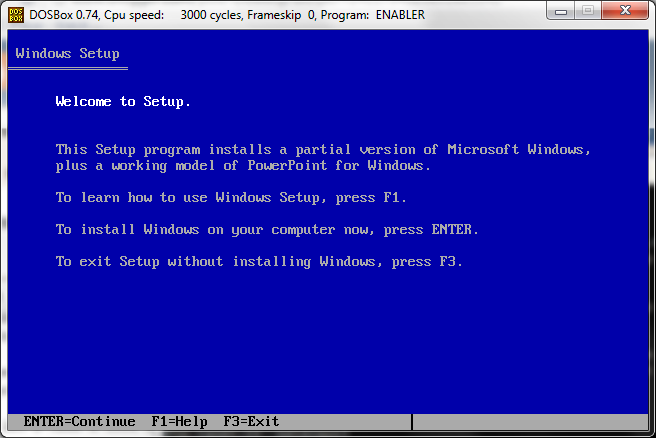
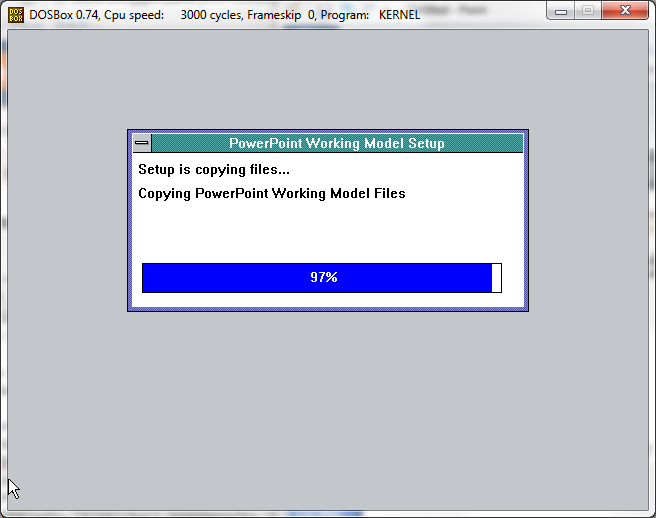

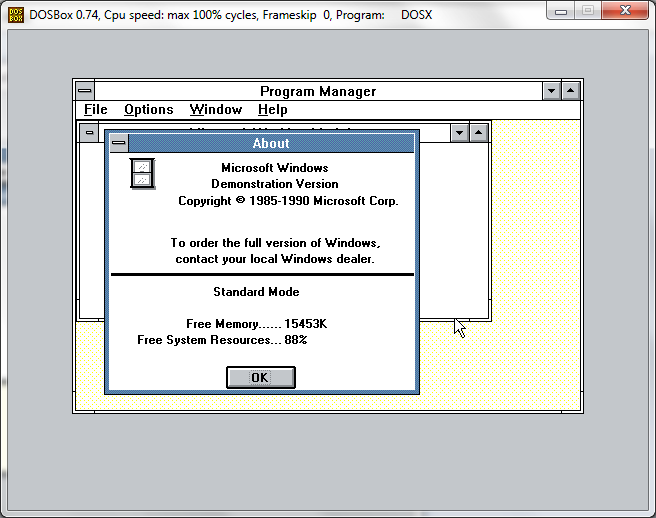
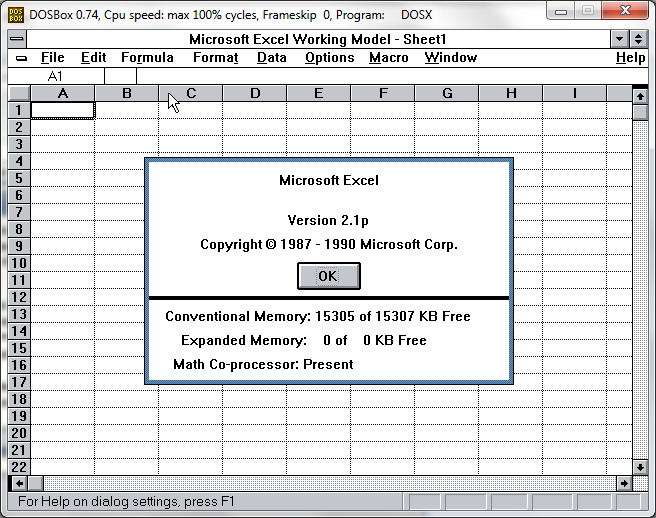
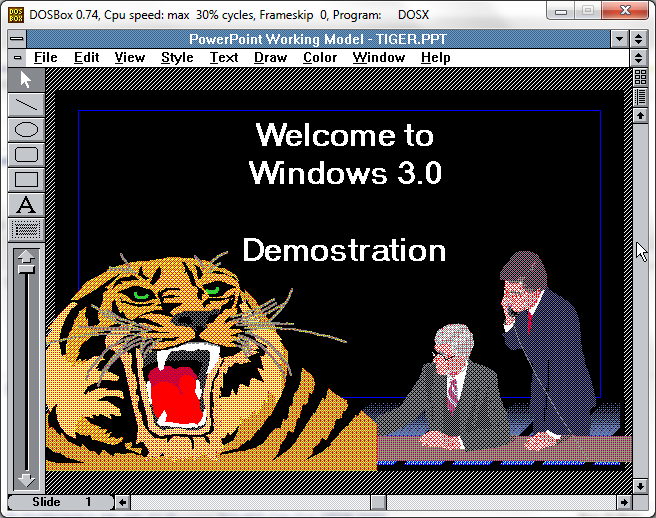
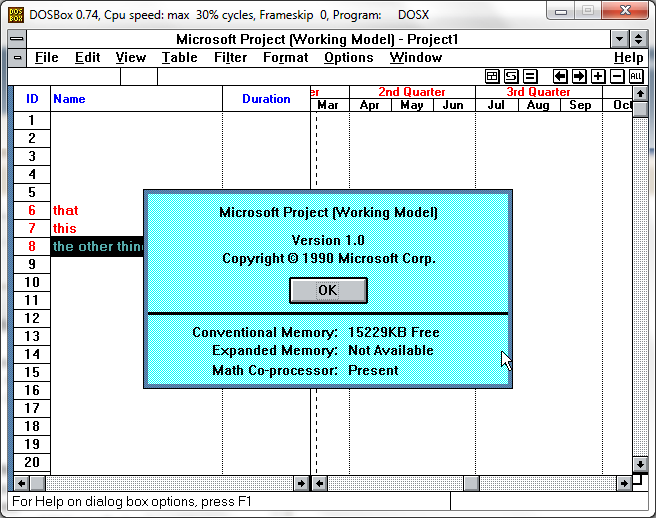

Windows 95/98/ME Setup did the same thing. MINI.CAB on the Windows CD contains a "Mini-Windows" 3.1 that is used when Setup is run from DOS.
However, dependencies become an isssue if you want to use it for anything besides WINSETUP.BIN. Without SHELL.DLL and COMMDLG.DLL you can't run anything more sophisticated than WINVER, TASKMAN, or WINTUTOR. With those DLLs, however, most of the Windows 3.1 games and accessories seem to work. And the file expands to just 896K plus your applications and DLLs.
In theory, this implies that Windows 3.1 was being sold to end-users until Windows XP came out at the end of 2001 — a period of nine years.
You are correct in that windows 3.1 or a small copy of it is hiding in the '1st stage graphical' install of the windows 9x series…
I'm not sure if there ever was a retail 'Windows 3.1' runtime, nor any 'Windows 3.1 working model' type software either. I just remember that when Windows 3.1 came out people were just buying it.. And at the time I had a CGA card so I had to install Windows 3.0 then update to 3.1 to maintain the CGA driver…
shell & commdlg are part of 3.1 and used in all kinds of '3.1' capable applications, while dungeon/zork f2c is built with QuickC for Windows which was targeted to Windows 3.0 ….
But it's interesting with all the stuff buried around that time period.
In fact, at least COMMDLG, along with some other DLLs from 3.1, were bundled as part of the 3.1 SDK for installation on 3.0.